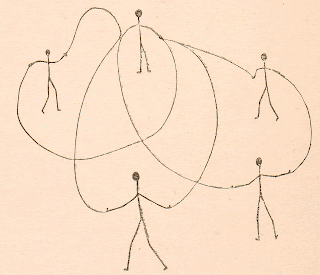- character, hero, unknown soldier -
Cinema is an art of figures. Not only figures of visible space and active places. It is foremost an art of the great figures of active humanity. It proposes a kind of universal stage of action and its confrontation with common values. After all, cinema is the last place populated by heroes.
"In any period of time, in any sequence of history, we have to maintain a relationship with what exceeds our possibilities; with what, as an idea, exists beyond the natural needs of the human animal. In crucial experiences, such as love, artistic creation, scientific discoveries, political struggle, we must exceed the limits of our vital and social determinations. We must encounter, within our own humanity, the obscure, violent, at the same time luminous and peaceful, element of inhumanity within the human element itself. Humanity is not reducible to animality, to the extent that the inhuman is a creative part of humanity. It is in the element of inhumanity that human creation shows that part of human nature which does not exist but must become; Humanity is never completely realized, is never something natural. Humanity is an infinite victory over its immanent element of inhumanity To accept, to support, this experience of the inhuman element of ourselves, we must, all of us, human animals, use some imaginary means. We must create a symbolic representation of this humanity which exists beyond itself, in the fearsome and fertile element of the inhuman. I call that sort of representation an heroic figure. "Figure", because the action of a figure is a symbolic one. "Heroic", because heroism is properly the act of the infinite in human actions. "Heroism" is the clear appearance, in a concrete situation, of something which assumes its humanity beyond the natural limits of the human animal." (Alain Badiou)
The old figure of heroism, before the great French Revolution was the figure of the individual warrior. It was the central figure in all the great epic poems of all countries. The figure of the warrior is beyond humanity, because it is between the human animal and the Gods.
The French Revolution replaced the individual and aristocratic figure of the warrior with the democratic and collective figure of the soldier. This was a new imaginary of the relationship between the human and the inhuman. The collective dimension of this figure is essential. The soldier has no proper name. It is the very essence of the symbolic figure of the soldier to be unknown, to remain anonymous. The fundamental dimension of the figure of the soldier is precisely the dialectical unity between courageous death and immortality, without reference either to a personal soul or to a God. It is democratic glory, which creates something immortal with collective and anonymous courage. We can speak here of an immanent immortality.
Benedict Anderson describes the cultural significance of tombs to Unknown Soldiers:
"No more arresting emblems of the modern culture of nationalism exist than cenotaphs and tombs of Unknown Soldiers. The public ceremonial reverence accorded these monuments precisely because they are either deliberately empty or no one knows who lies inside them, has no true precedents in earlier times. To feel the force of this modernity one has only to imagine the general reaction to the busy-body who "discovered" the Unknown Soldier's name or insisted on filling the cenotaph with some real bones. Sacrilege of a strange, contemporary kind! Yet void as these tombs are of identifiable mortal remains or immortal souls, they are nonetheless saturated with ghostly national imaginings. The empty tomb represents the ideal everyman, willing to sacrifice himself for the glory of the nation."
The most important question is:
How can we find a new heroic figure, in film, theatre and other media, which is neither the return of the old figure of religious or national sacrifice, nor the nihilistic figure of the last man? Is there a place for a new style of heroism?


